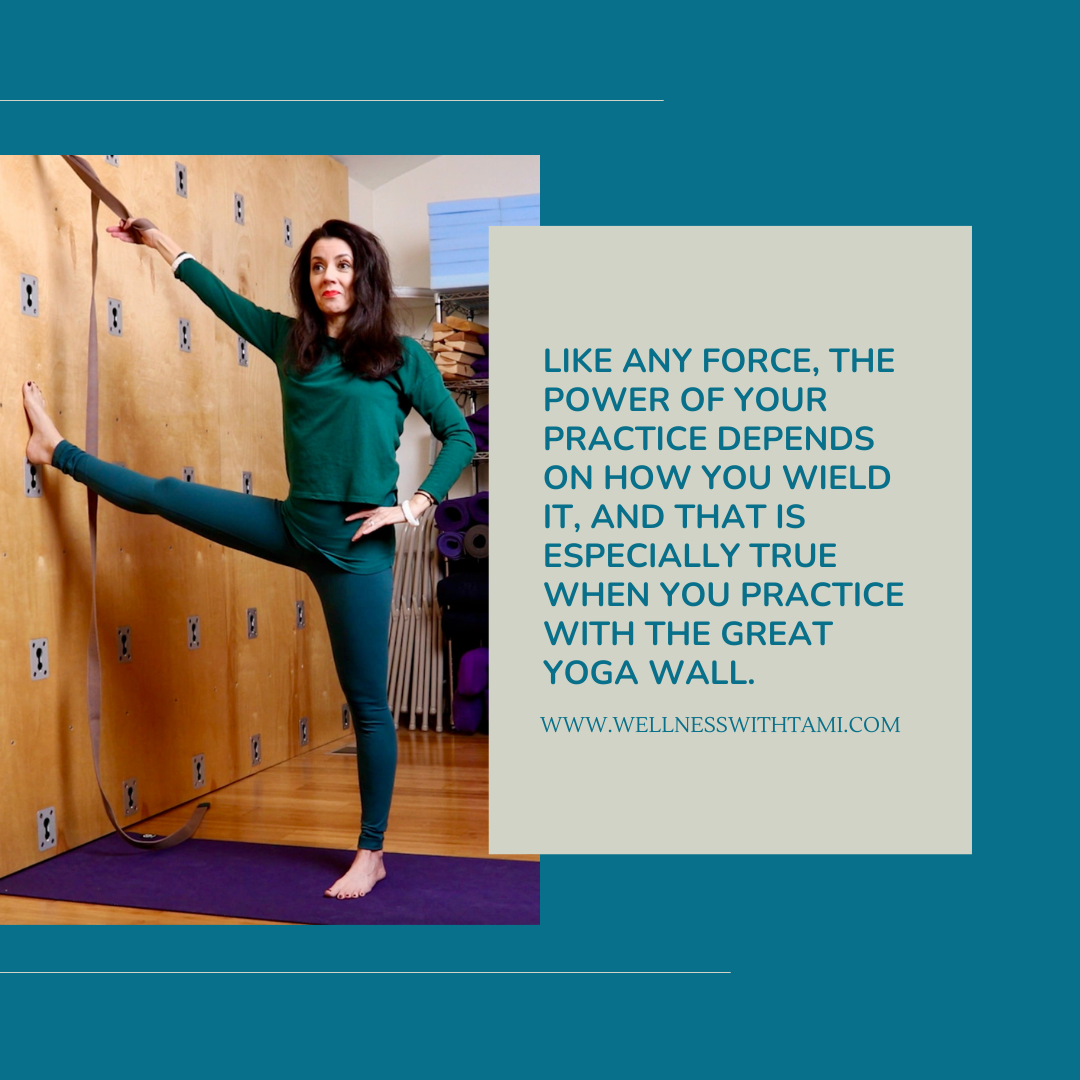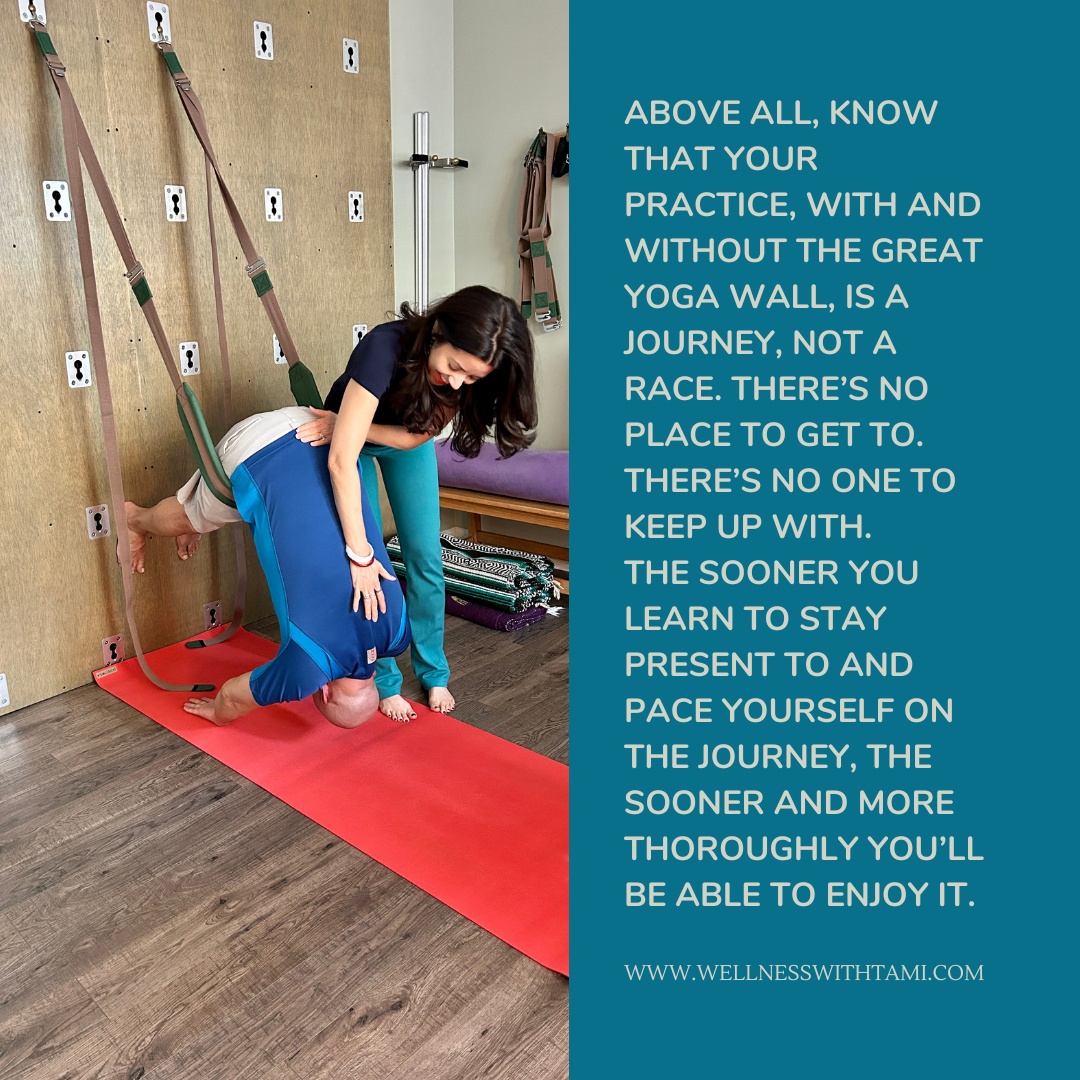How to Avoid Overstretching with the Great Yoga Wall
With or without the Great Yoga Wall, we’ve all been there.
I’m talking about finding ourselves in the City of Regret after having pushed ourselves too hard in a posture practice.
Every time I teach a Great Yoga Wall course or intensive, at least one of the participants mentions to me how sore they are.
Usually, it’s harmless, normal delayed onset muscle soreness that comes from working the muscles and opening up the body in different ways.
Sometimes, though, they’ve overdone it.
Like any force, the power of your practice depends on how you wield it, and that is especially true when you practice with the Great Yoga Wall.
What NOT to do: Pushing too hard with the Great Yoga Wall
Going overboard in your practice can happen for a variety of reasons.
What I often see happening with the Great Yoga Wall is that people get so excited about learning all there is to do with it that their minds start to take over and they bypass the messages their bodies are giving them.
They stay longer than they should in a pose.
They give themselves too much traction.
They go deeper than their bodies are ready to go.
They get thirsty for more and more poses.
They start comparing themselves to others.
They rush to get into a pose before having all the information they need.
The same things can happen when you practice without the Great Yoga Wall too.
The beauty of the Great Yoga Wall is that it offers a variety of ways to deepen your practice, from support that allows you to let go, to stability that helps you build strength and leverage that creates powerful and profound openings and releases.
The strength of the Great Yoga Wall provides all the more reason to stop pushing too hard in your practice so you don’t overdo it.
What to do instead: Start slowly and stay behind your maximum.
To stay safe in your posture practice, with or without the Great Yoga Wall, always listen to your body and stay behind your maximum.
With the Great Yoga Wall, it’s better to begin slowly and gently until you know how your body is going to react to the deep openings the yoga wall creates, especially if your nature is to overdo.
Studying with an experienced teacher will help you discover the safety principles you need to have a secure, confident Great Yoga Wall practice, as well as tips and tricks for gauging how long to stay in the poses and for keeping the stretch where it’s supposed to be.
Above all, know that your practice, with and without the Great Yoga Wall, is a journey, not a race. There’s no place to get to. There’s no one to keep up with.
The sooner you learn to stay present to and pace yourself on the journey, the sooner and more thoroughly you’ll be able to enjoy it.
This information is for educational and informational purposes only and solely as a self-help tool for your own use. I am not providing medical, psychological, or nutrition therapy advice. You should not use this information to diagnose or treat any health problems or illnesses without consulting your own medical practitioner. Always seek the advice of your own medical practitioner and/or mental health provider about your specific health situation.


